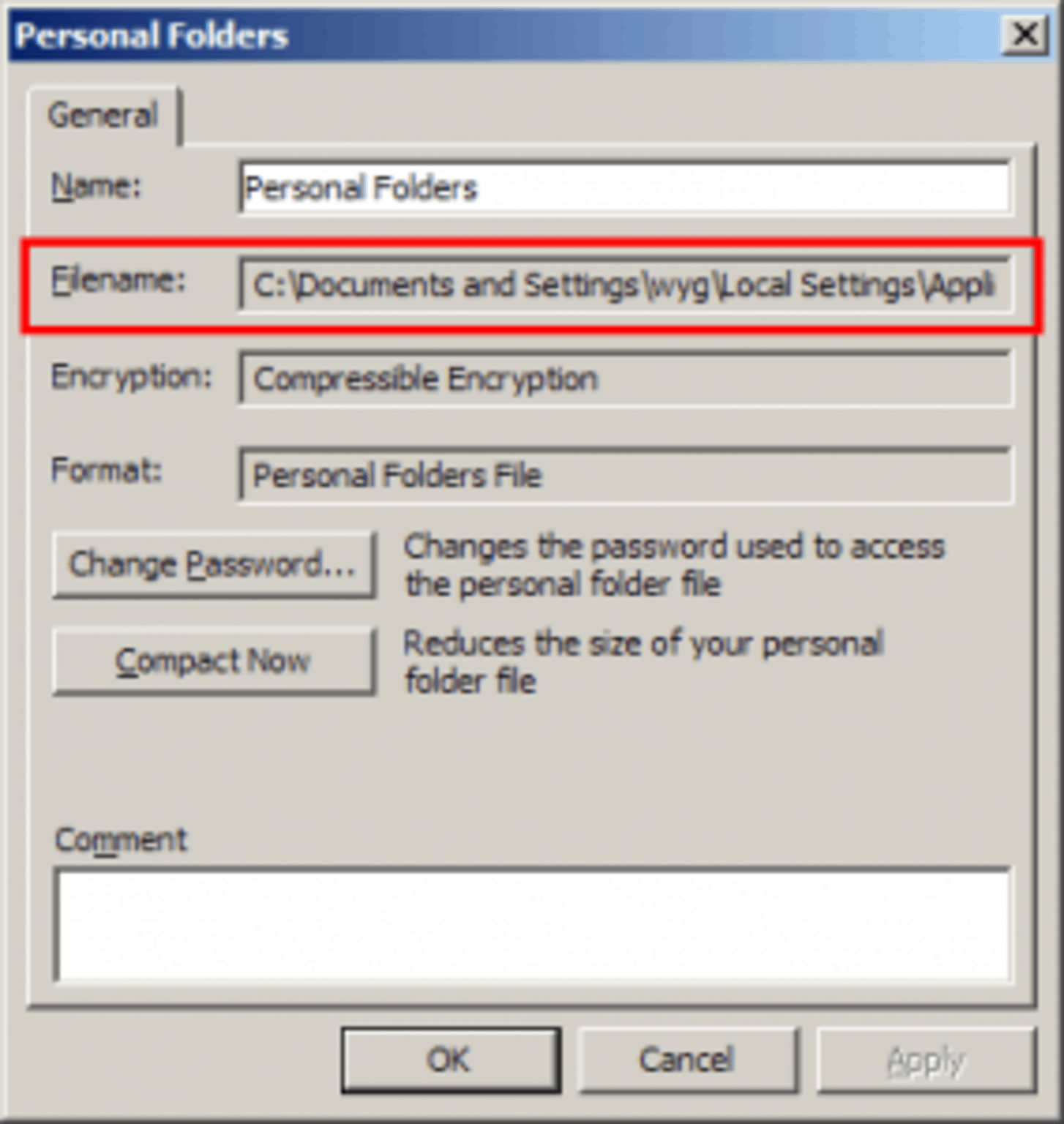Windows 10 Pst File Location
Solution 1: Separate backup set Create a separate with specific settings optimized for backing up your PST file. Open the CrashPlan app. of your new backup set to include only the PST file location. For the default location of your PST file, see below. From Home, select Details.
Your PST files are saved in your User Data folder by default and this is the folder location that will open. Simply double click the listing for your PST files and there they are. Alternatively, you can open your PST files directly from the User Data folder without opening Outlook.
Next to the new backup set, select the backup set settings button. From Device Backup Settings, change Backup Schedule to Only run between specified times.
Select a time window when Outlook is usually closed. Wait for the new backup set to back up completely. Change the file selection of your other backup set to exclude the PST file. Solution 2: Back up copy of PST file As an alternative to backing up the PST file directly, you can use a two-stage process:. Use another application to copy your PST file.

Back up the copy with CrashPlan. This process grants CrashPlan full access to back up the copied file, because it is not actively in use. A number of tools are available for copying your PST file, including:.


provided by Microsoft for copying files on a set schedule. Applies to Outlook 2007 or earlier. Provided for free. Read Microsoft's guide to. A third-party product for backing up Outlook data. Applies to Outlook 2000 through Outlook 2013 (32-bit and 64-bit).
Requires purchase. Read for instructions To copy and back up the file:. Select a PST copy tool. Configure the tool to copy your PST file as needed (for example, once per day). to include the copied PST file. Wait for the copy of the PST file to back up completely. Change your backup file selection to exclude the original (non-copy) PST file.
The default location of your Outlook Data File depends on your operating system and Outlook version. Operating System Outlook Version File Location Windows 7, 8, and 10. Outlook 2016. Outlook 2013.
Outlook 2010 C: Users Documents Outlook Files Outlook 2007 C: Users AppData Local Microsoft Outlook Mac OS X 10.10 or later Outlook 2016 /Users//Library/Group Containers/UBF8T346G9.Office/Outlook/Outlook 15 Profiles/Main Profile Mac OS X 10.5 or later Outlook 2011 /Users//Documents/Microsoft User Data/Office 2011 Identities/Main Identity Mac OS X 10.4.9 or later Entourage 2008 /Users//Documents/Microsoft User Data/Office 2008 Identities/Main Identity.
Pst Files In Outlook
Steve F.: Thank you for taking the time to help. By the time I saw your response I had solved it a different way based on other information I found on the Internet, so I don't know whether your method would also have worked.
What I did was add a registry key in an Outlook section of the registry with a name something like ForcePST (I forget the exact name) and a value of the path where my pst files are actually formed. This was described elsewhere on the Internet. It didn't work the first time and I had to do some trial and error and tweak one entry and then it worked.
From my non-professional perspective, I think Outlook was looking in the wrong place for pst files and this registry entry fixed that. If anyone needs a better description, I could probably re-find the solution and remember the slight tweak I made. Hi, Please try the steps below and then check if this issue persists: 1. Browse to the file location where you stored the PST file. Right click on the PST file and choose Properties. 3. Under the Security tab, click the Edit button.
4. Highlight your user account and give yourself the “Full control” permission. Press OK, press OK again. Start Outlook and test it again. Please let me know the result. Regards, Steve Fan TechNet Community Support It's recommended to download and install, which is developed by Microsoft Support teams. Once the tool is installed, you can run it at any time to scan for hundreds of known issues in Office programs.
Please remember to mark the replies as answers if they help, and unmark the answers if they provide no help. If you have feedback for TechNet Support, contact. Steve F.: Thank you for taking the time to help. By the time I saw your response I had solved it a different way based on other information I found on the Internet, so I don't know whether your method would also have worked.
Windows 10 Outlook 2003 Pst File Location
What I did was add a registry key in an Outlook section of the registry with a name something like ForcePST (I forget the exact name) and a value of the path where my pst files are actually formed. This was described elsewhere on the Internet. It didn't work the first time and I had to do some trial and error and tweak one entry and then it worked. From my non-professional perspective, I think Outlook was looking in the wrong place for pst files and this registry entry fixed that. If anyone needs a better description, I could probably re-find the solution and remember the slight tweak I made.